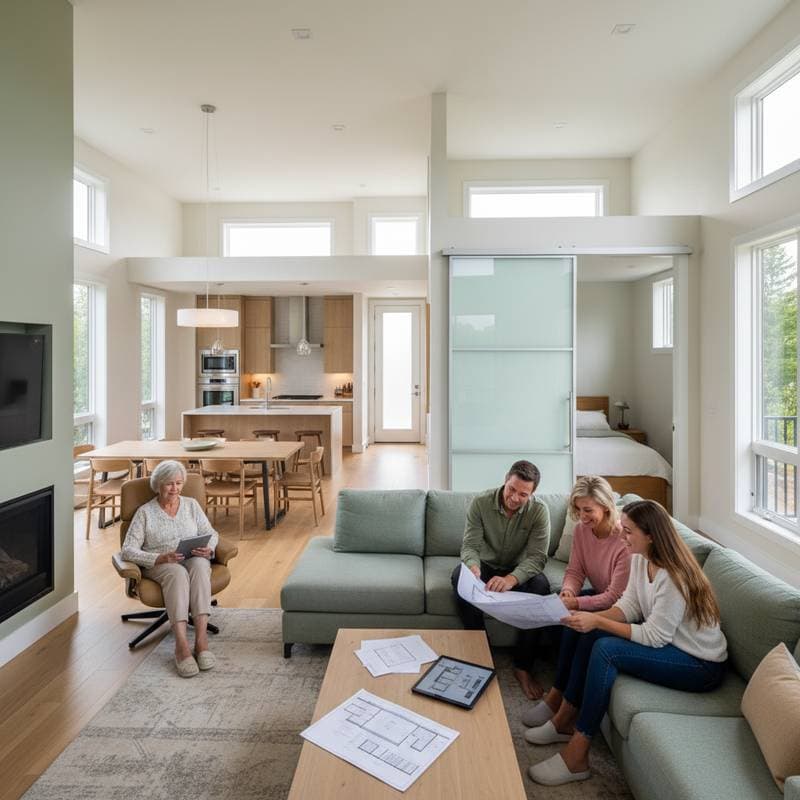Hidden Home Warranty Fees You Need to Know
Quick answer: Home warranties offer protection against major repair costs, yet numerous homeowners encounter unexpected charges. Service call fees, coverage exclusions, and upgrade expenses frequently result in additional hundreds of dollars annually unless individuals review terms thoroughly in advance.
At a glance:
- Average annual premium: $450 to $900, depending on coverage scope and location
- Service call fees: $75 to $150 per claim, with options to adjust for premium variations
- Hidden fees to watch: Service call limits per incident, non-covered components like seals or filters, removal and disposal costs, and policy transfer fees upon home sale
- Skill level to manage: Suitable for beginners with basic research, though detailed contract review demands attention to detail
- Main risk: Incurring excess costs when claims face denial or partial reimbursement due to overlooked exclusions
Key Cost Factors to Know
Home warranty plans feature a standard annual premium, but subsequent charges often emerge during claims. Individuals should examine these elements prior to purchase to facilitate accurate comparisons across providers.
-
Service call fee per visit: This deductible-like charge applies each time a technician visits, regardless of repair outcome. Providers typically range from $75 for basic plans to $150 for comprehensive ones, and selecting a higher fee might lower the premium.
-
Multiple visit charges: A single appliance failure, such as a malfunctioning dishwasher, may necessitate several technician appointments for diagnosis, parts installation, and testing. Each additional visit incurs a new fee unless the policy specifies otherwise.
-
Excluded components: Standard plans omit items like ductwork in HVAC systems, refrigerant replenishment, or waste disposal for appliances. These exclusions can lead to out-of-pocket expenses exceeding $500 for specialized services.
-
Upgrade or code compliance charges: Repairs involving modern equipment or adherence to updated building codes often require homeowners to cover the difference. For instance, replacing an outdated electrical panel might add $200 or more beyond warranty limits.
-
Cap limits per item or per year: Policies set maximum payouts, such as $1,500 per appliance or $3,000 annually. Exceeding these caps means full responsibility for remaining costs on high-value repairs like roof-mounted AC units.
-
Transfer and cancellation fees: Selling a home triggers transfer fees of $25 to $75, while early cancellation may forfeit premiums or impose penalties up to 10 percent of the annual cost.
-
Emergency or after-hours surcharges: Urgent repairs outside standard hours, such as a burst pipe at midnight, add $50 to $100 on top of the service fee.
-
Optional coverage costs: Add-ons for features like swimming pools ($100 to $200 extra), septic systems ($150 annually), or roof leak protection ($50 to $100) increase premiums but address specific vulnerabilities.
By identifying these factors, potential buyers gain clarity on long-term expenses and select plans that align with their home's needs.
Pros and Cons of Home Warranty Coverage
Home warranties provide structured support for appliance and system failures, yet they include trade-offs that affect overall value.
Pros
- Predictable annual expenses for frequent breakdowns, such as HVAC failures or plumbing issues, allowing budgeting without surprise repair bills.
- Streamlined scheduling through a single provider network, reducing the hassle of sourcing independent contractors.
- Protection for aging infrastructure in homes over 10 years old, where failure risks rise significantly.
- Reassurance for first-time homeowners unfamiliar with ongoing maintenance responsibilities.
Cons
- Concealed fees and broad exclusions that diminish the effective coverage, sometimes resulting in minimal reimbursements.
- Requirement to use approved contractors, which may limit choices and lead to suboptimal service quality.
- Frequent claim denials stemming from inadequate prior maintenance or undetected preexisting conditions.
- Potential delays in service, particularly in areas with limited technician availability, extending downtime for essential systems.
While home warranties mitigate certain risks, their benefits depend on a clear grasp of costs and constraints prior to enrollment.
Timeline and Claim Process
Navigating a claim requires adherence to specific steps to avoid delays or denials. The process emphasizes verification and provider coordination.
-
Identify the issue. Determine if the problem involves a mechanical failure, excluding structural damage or neglect-related wear. Document symptoms with photos or videos for submission.
-
Submit a claim. Contact the provider via online portal or phone within 24 to 48 hours of noticing the issue. Provide detailed descriptions to expedite review.
-
Pay the service call fee. Dispatch occurs only after payment confirmation, typically processed instantly through credit card.
-
Diagnosis and approval. The assigned technician assesses the problem on-site and submits findings to the warranty company, which approves or denies within hours to one day.
-
Repair or replacement. Authorized work begins, with the provider covering approved portions up to policy limits. Replacements follow if repairs prove unfeasible.
-
Possible return visits. Follow-up appointments for adjustments or part installations may occur, each potentially requiring an additional fee unless bundled under the initial claim.
Routine claims resolve in one to three days, but those involving custom parts or licensed specialists, like electrical rewiring, may span five to ten days. Verify fee structures for repeat visits to prevent escalation.
Materials and Tools Checklist
Proactive maintenance preserves warranty eligibility by demonstrating proper care. Assemble these essentials to handle routine tasks and record activities.
- Screwdrivers in various sizes, pliers for gripping, and an adjustable wrench for plumbing fittings
- Replacement air filters for HVAC systems, changed quarterly to prevent voided claims
- Coil cleaning brush for refrigerators to maintain efficiency and avoid exclusion for neglect
- Hose and kit for flushing water heaters annually, reducing sediment buildup
- Flashlight with adjustable beam and a flexible inspection mirror for accessing tight spaces
- Digital notebook or maintenance app to log dates, actions, and receipts for claim support
Regular use of these items not only extends equipment life but also bolsters evidence during disputes over coverage.
Regional and Climate Considerations
Warranty terms and expenses fluctuate based on geographic factors, influencing coverage priorities and provider reliability.
In regions with extreme heat, such as the Southwest, air conditioning systems demand robust HVAC plans, though exclusions for high-wear components like compressors tighten. Colder climates in the Northeast prioritize furnace and heating coverage, with potential surcharges for fuel-related issues.
Areas prone to high humidity, like the Southeast, encounter more restrictions on corrosion or mold damage, which can invalidate claims for affected appliances. Always review policy addendums for climate-specific adjustments.
Service network density varies; urban zones benefit from rapid response, while rural locations face technician shortages, possibly incurring travel fees of $50 or more. Inquire about partner counts in your area and average response times during the quoting phase to gauge practicality.
FAQs
Can service call fees be negotiated? In certain cases, providers allow adjustments, such as increasing the fee to $125 in return for a reduced annual premium by $50 to $100.
Are preexisting conditions covered? Policies exclude failures present or known at the start date, including intermittent issues, to prevent abuse of coverage.
What occurs if a repair fails again? Warranties include workmanship guarantees of 30 to 90 days, covering fixes without extra fees. Beyond that period, new claims trigger standard charges.
Can contractors be selected independently? Generally, no; unauthorized use voids claims. Exceptions apply if the provider fails to respond within 48 hours, allowing reimbursement for approved amounts.
Is a home warranty valuable for newer homes? Initial manufacturer warranties on systems like plumbing and appliances often suffice for the first few years. Transition to a home warranty once those protections lapse, typically after one to two years.
Steps to Secure Favorable Coverage
To minimize exposure to hidden fees, scrutinize complete contracts prior to commitment. Focus on definitions of covered events, reimbursement caps, and lists of excluded items. Obtain quotes from a minimum of three companies and engage customer service to evaluate communication efficiency.
Request sample claim scenarios to understand real-world applications. If possible, opt for plans with flexible fee structures and broad networks. This preparation ensures the warranty functions as intended, delivering reliable protection without unforeseen financial strain.



